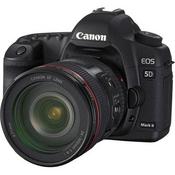Photo by Jack Batchelor
You can create a blurry background in your portrait photography with a very simple process.
When you are photographing people, a soft focus background can help rid your photo of any potential distractions. This effect is called a shallow depth of field.
With a shallow depth of field, just the face or person would be in focus, and the background would be progressively blurry. In a longer depth of field, your subject and everything in the background is sharply in focus.
Here are the four ingredients to consider when creating a dramatically shallow depth of field:
Photo by peasap
Wide aperture. One of the first lessons in manipulating exposure is that the size of your shutter controls your depth of field. The larger the shutter opening for each shot, the smaller the amount of your photo will be in focus. Choose lower numbers, like f4 - f2, to get the most dramatic effect. Remember that aperture f-stop numbers work in reverse; the lower numbers represent the larger openings.Distance to your subject. Getting close to your subject is a great composition principle anyway, but it is even more important when you want to knock out your background. If you are 10 feet from your subject, it is much easier to create a shallow depth of field than if you are 50 feet from your subject.

Photo by Johan J.Ingles-Le Nobel
The amount of zoom: When you zoom in, you compress the elements of your photo, so everything behind your subject becomes more dramatic. A wide angle lens might not create a shallow depth of field, but if you zoom in a telephoto lens to 100 mm to 200 mm, the results become far more dramatic.
Size of your sensor: Your sensor size will impact the final quality of your image in many ways. Making your background blurry is just one of them.
Photo by Jack Batchelor
Don't try to get a shallow depth of field with a camera phone. The sensor is so tiny, you won't see much effect. With a compact camera (point and shoot), it is possible to manipulate depth of field, but difficult. With a DSLR, you can start to see really dramatic effects because the sensor is much larger. Use a full frame digital sensor camera, and the results will be incredible.
Blurring out your background is one of many composition techniques you can use to create great portrait photography. With four easy ingredients, you could be on your way to making outstanding pictures.
About the author
Lynford Morton is founder and lead instructor of PhotoTour DC, where he teaches photography principles on walking workshops around Washington, DC. He shares and insights and resources at http://www.PhotoCoachPro.com. Register for photography workshops in Washington, DC at http://www.phototourdc.com.
Lynford Morton is founder and lead instructor of PhotoTour DC, where he teaches photography principles on walking workshops around Washington, DC. He shares and insights and resources at http://www.PhotoCoachPro.com. Register for photography workshops in Washington, DC at http://www.phototourdc.com.






